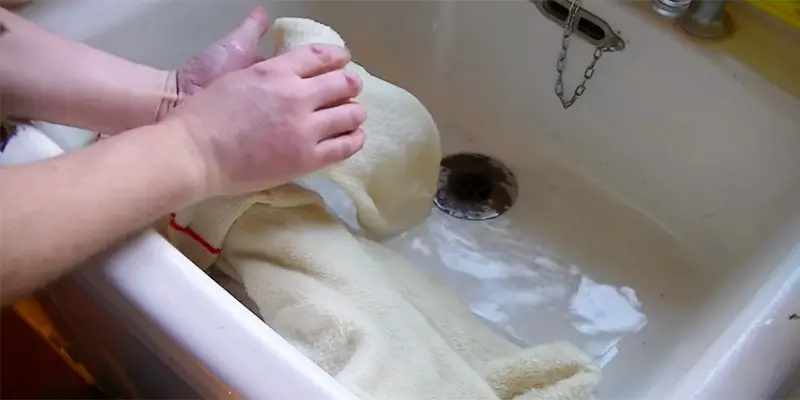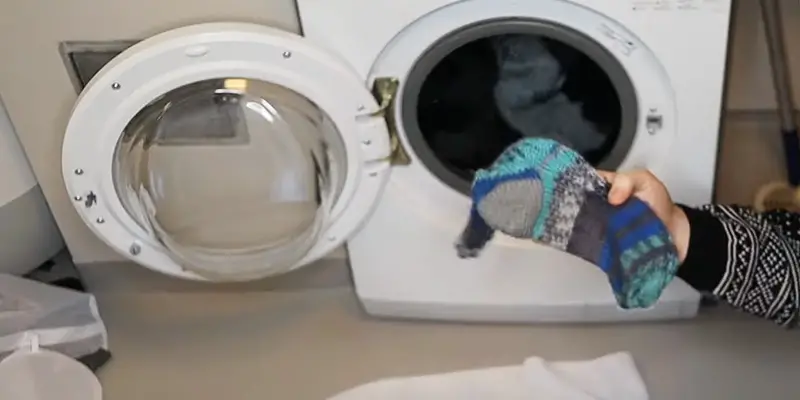Hi, I'm Christopher Bevans, the creator of SocksWiki.com. With a background in fashion design and a passion for innovation, I’m here to share my knowledge on socks from troubleshooting tips to detailed buying guides. I believe the right pair of socks can make all the difference, and through this site, I aim to help you find the perfect fit for every occasion.
Hi, I'm Christopher Bevans, the creator of SocksWiki.com. With a background in fashion design and a passion for innovation, I’m here to share my knowledge on socks from troubleshooting tips to detailed buying guides. I believe the right pair of socks can make all the difference, and through this site, I aim to help you find the perfect fit for every occasion.
Washing white socks with color on them requires special care to preserve both the bright white and vivid colors.
Without the right approach, colors can bleed and fade, dulling the socks’ appearance. Proper washing techniques help maintain the socks’ quality and extend their lifespan.
This guide will cover essential steps, such as sorting laundry, using cold water, choosing the right detergent, and selecting appropriate washing machine settings.
By following these methods, you can keep your white socks with colored sections looking fresh and vivid, ensuring they remain a stylish and functional part of your wardrobe.
10 Steps on How to Wash White Socks With Color on Them
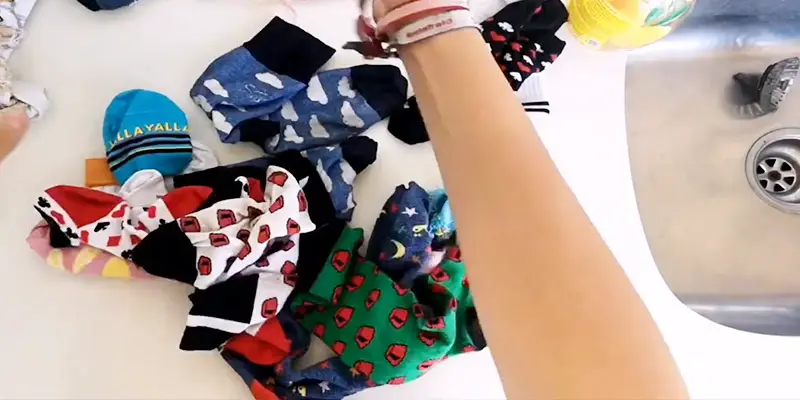
Washing white socks with colors requires special care to prevent the colors from bleeding onto the white areas.
Here are 10 easy steps for washing white socks with colors on them effectively:
1. Sort Your Laundry
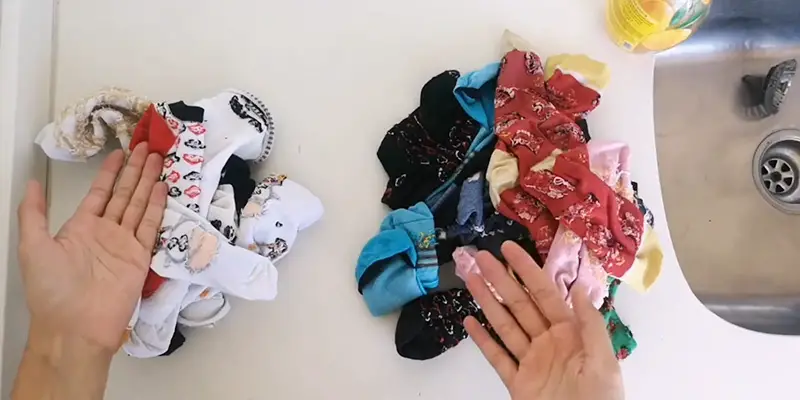
Sorting your laundry is a crucial first step in washing white socks with colored sections. Separate these socks from other garments, particularly those with dark or vivid colors.
This segregation helps to prevent dye transfer from other clothes, which could discolor the white areas of the socks.
Keeping similar items together also allows for more efficient washing, as different fabrics and colors may have unique care requirements.
2. Check Care Labels
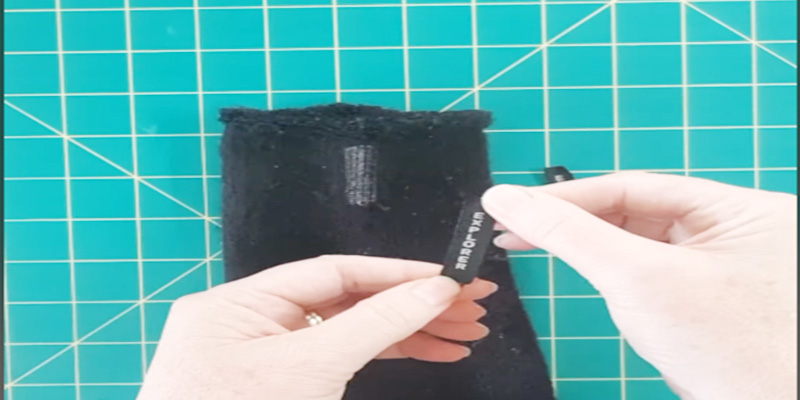
Always check the care labels on your socks before washing. These labels provide essential information about the appropriate washing methods, water temperature, and drying instructions.
Some socks with special dyes or materials may require hand washing or dry cleaning. Ignoring these instructions can lead to color bleeding, shrinking, or damaging the fabric.
By following the care labels, you ensure the longevity and appearance of your socks.
3. Pre-Treat Stains
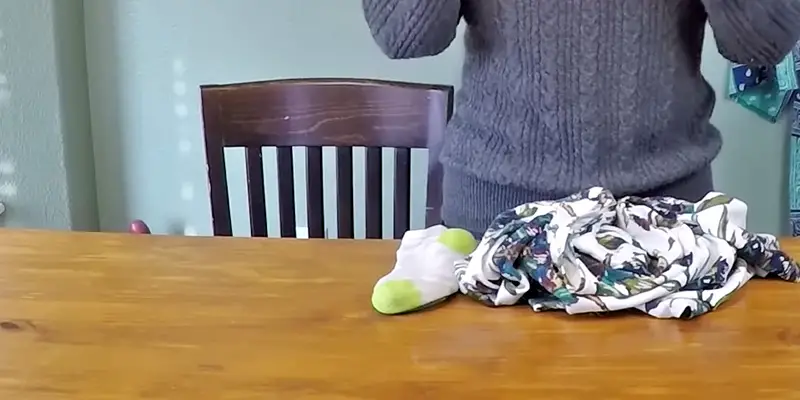
Pre-treating stains is an important step to ensure your socks come out clean. Apply a stain remover or a mild detergent directly to any visible stains on the socks, particularly on the white areas, as they can be more prone to visible staining.
Let the treatment sit for a few minutes to break down the stains before washing.
This process is especially useful for removing tough stains like grass, mud, or food, which can set in during washing if not pre-treated.
4. Use Cold Water
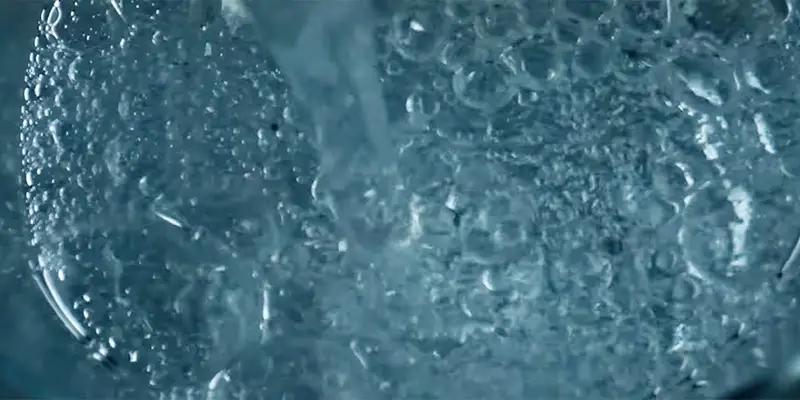
Using cold water for washing is advisable for socks with both white and colored sections. Cold water is less likely to cause the colors to bleed into the white areas, preserving the vibrancy and clarity of the socks’ design.
It also reduces the risk of shrinking, which can occur with hot water. Cold water washing is generally gentler on fabrics, helping to maintain the integrity of the material over time.
5. Choose a Gentle Detergent
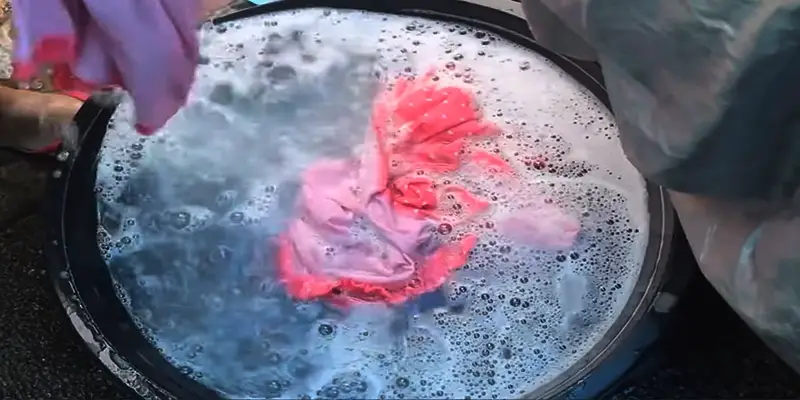
Selecting the right detergent is key to protecting your socks. A gentle, color-safe detergent is best, as it cleans effectively without being too harsh on the colors or fabric.
Avoid using bleach or detergents with bleach additives, as these can cause the colors to fade and may even damage the fibers of the socks.
Opting for a detergent designed for delicate fabrics or for colors can help maintain the socks’ appearance and texture.
6. Turn Socks Inside Out
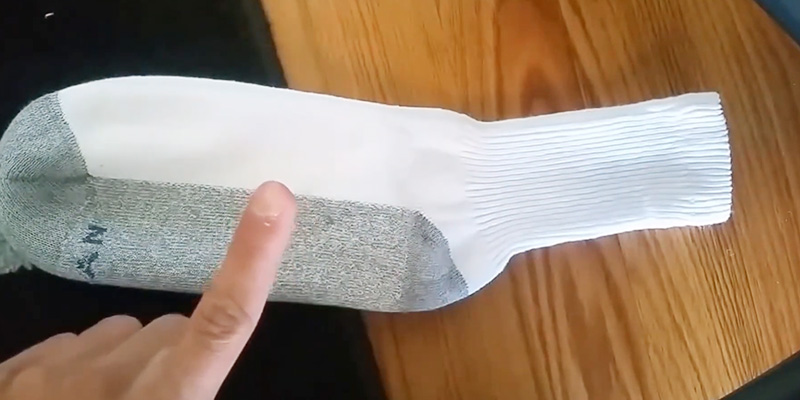
Turning your socks inside out before washing is a helpful practice. This step protects the colored sections from excessive friction and abrasion, which can occur during the washing process.
It also helps to ensure that any stains or dirt on the inside of the socks are more effectively cleaned.
By reducing wear on the outer surfaces, turning socks inside out can extend their lifespan and keep them looking newer for longer.
7. Select a Gentle Cycle
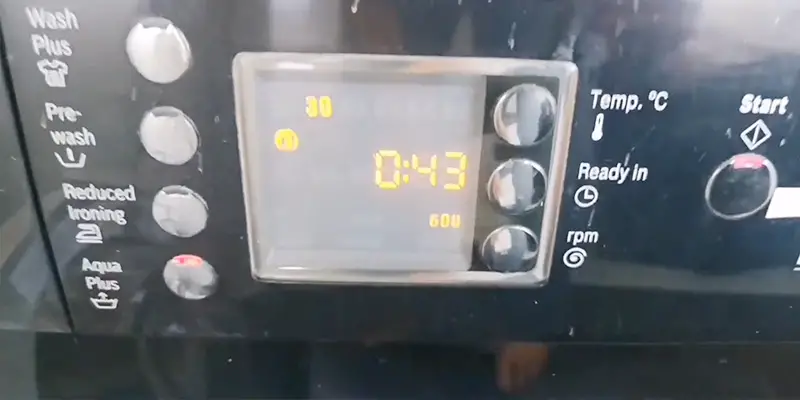
When setting your washing machine, choose a gentle or delicate cycle. This cycle uses slower agitation and a shorter washing time, which minimizes the risk of the colors bleeding and reduces the wear and tear on the fabric.
A gentle cycle is particularly important for socks with intricate patterns or special materials, as it helps preserve their appearance and structure.
8. Avoid Overloading the Machine
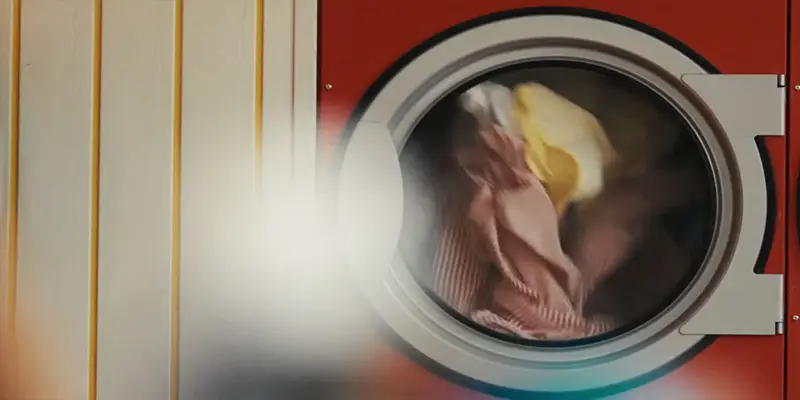
Avoiding overloading the washing machine is essential for effective cleaning and preventing damage.
Overloading can cause the socks to rub against each other excessively, which increases the likelihood of color transfer and wear.
It also reduces the machine’s ability to circulate water and detergent properly, leading to less effective cleaning.
Keeping the load size manageable allows each item to be washed thoroughly and gently.
9. Rinse Thoroughly
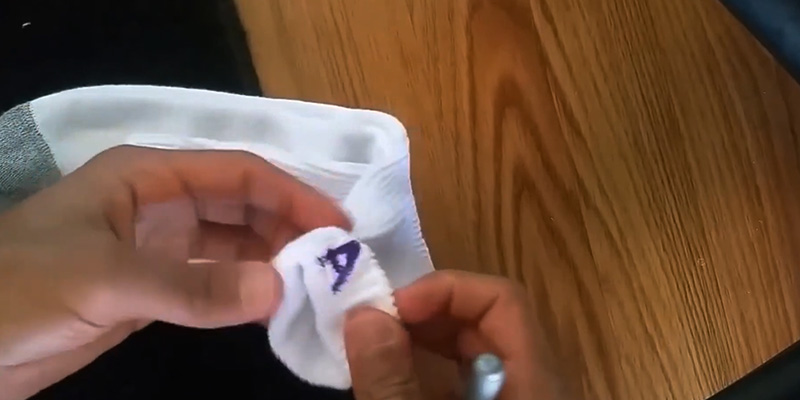
Ensure that your socks are rinsed thoroughly during the washing process. Proper rinsing removes all traces of detergent, which can leave residues that attract dirt and can cause skin irritation.
If your washing machine has an extra rinse cycle, consider using it to ensure that all detergent is fully washed out.
Thorough rinsing is especially important for socks, as residues can cause stiffness and reduce their softness.
10. Air Dry
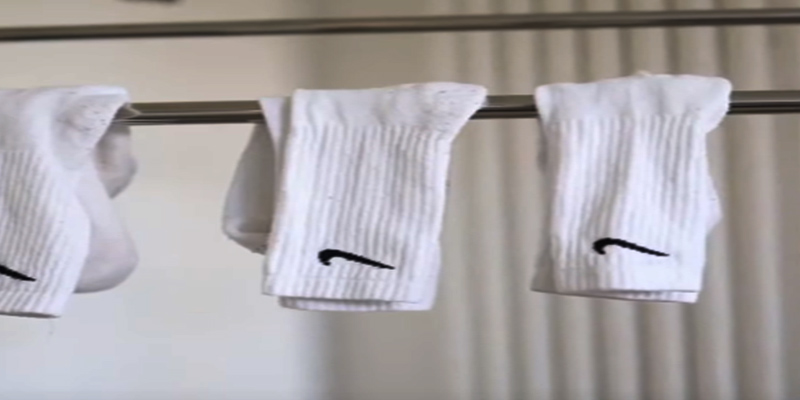
Air drying is the best method for drying socks with both white and colored sections.
This method helps maintain the integrity of the colors and prevents shrinkage, which can occur with high-heat drying methods like using a tumble dryer.
Lay the socks flat or hang them to dry, avoiding direct sunlight, which can cause colors to fade over time.
Air drying also helps maintain the elasticity and fit of the socks, ensuring they remain comfortable and retain their shape.
Frequently Asked Questions
Can I Wash White Socks With Colors?
Yes, you can wash white socks with colored sections, but it’s important to take precautions to prevent color bleeding.
How Do You Get Color Out of White Socks?
To remove color stains from white socks, you can soak them in a mixture of cold water and oxygen-based bleach, following the product’s instructions.
Avoid using chlorine bleach, as it can weaken the fabric and damage any colored sections. Always test the solution on a small area first to ensure it doesn’t affect the colors.
How to Wash White Socks With Black Stripes?
When washing white socks with black stripes, use cold water and a gentle, color-safe detergent.
Turn the socks inside out to protect the stripes from fading or bleeding.
Use a gentle cycle on your washing machine and avoid overloading it to reduce friction between garments.
Wrap Up
Washing white socks with colored sections requires attention to detail to prevent color bleeding and maintain their quality.
By following the proper steps such as sorting your laundry, using cold water, choosing a gentle detergent, and opting for a gentle cycle you can keep your socks looking fresh and vivid. Additionally, air drying helps preserve the integrity of the colors and fabric.
So, by taking these precautions, you can ensure your socks remain bright, comfortable, and long-lasting, making them a dependable part of your wardrobe.

Hi, I'm Christopher Bevans, the creator of SocksWiki.com. With a background in fashion design and a passion for innovation, I’m here to share my knowledge on socks from troubleshooting tips to detailed buying guides. I believe the right pair of socks can make all the difference, and through this site, I aim to help you find the perfect fit for every occasion.
- Latest Posts by Christopher Bevans
-
Socks Smell Like Ammonia: Causes and Solution
- -
Best Socks Material for Sweaty Feet 2026
- -
What Socks to Wear With Cowboy Boots?
- All Posts

